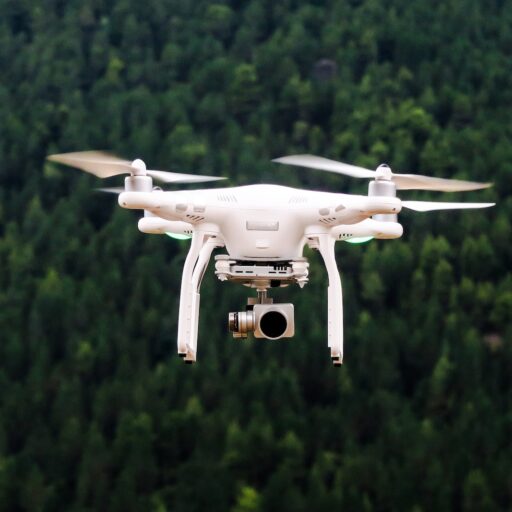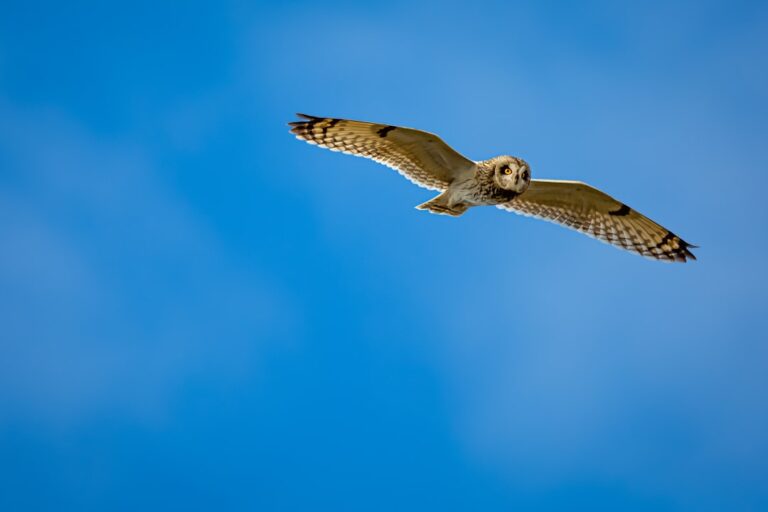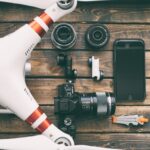Support our educational content for free when you purchase through links on our site. Learn more
Where to Fly Drones Recreationally: 10 Best Spots & Tips (2025) 🚁
Picture this: you’ve just unboxed your shiny new drone, the sun is setting, and you’re itching to take to the skies. But wait—where exactly can you fly your drone recreationally without landing in hot water? Spoiler alert: not every park, beach, or open field is drone-friendly, and the rules can be as tricky as a drone’s flight path in gusty winds. At Drone Brands™, we’ve logged countless hours exploring the best legal and scenic spots to fly, and we’re here to share the ultimate guide for 2025.
In this article, we’ll break down the top 10 drone-friendly locations, decode the complex airspace rules, reveal must-have apps to avoid no-fly zones, and help you pick the perfect drone for your adventures. Whether you’re a newbie or a seasoned pilot, by the end, you’ll know exactly where to launch, how to stay compliant, and how to soar safely with confidence. Ready to unlock the skies? Let’s dive in!
Key Takeaways
- Know your airspace: Fly mostly in uncontrolled Class G airspace and avoid no-fly zones like airports and national parks.
- Pass the FAA’s TRUST test and register drones over 0.55 lbs to stay legal.
- Use apps like B4UFLY and AirMap to check real-time restrictions and request LAANC authorization when needed.
- Top drone-friendly spots include dedicated drone parks, certain state parks, and open public spaces with local permission.
- Respect privacy, wildlife, and local laws to keep the hobby enjoyable for everyone.
- Choose the right drone for your skill level—our favorites include the DJI Mini 4 Pro for beginners and the Autel EVO Lite+ for advanced flyers.
Ready to find your perfect flying spot? Check out our recommended drones and gear below to get started:
- 👉 Shop DJI Mini 4 Pro: Amazon | DJI Official
- Explore Holy Stone Drones: Amazon | Holy Stone Official
- Discover Autel EVO Lite+: Amazon | Autel Robotics
Table of Contents
- ⚡️ Quick Tips and Facts for Recreational Drone Pilots
- A Sky-High Journey: The Evolution of Recreational Drone Flying & Why Rules Matter
- Understanding the Airspace: Decoding Where You CAN and CAN’T Fly Your Drone 🚫
- 1. Top Spots to Launch Your Drone: Finding Legal & Scenic Recreational Flight Locations 🏞️
- Public Parks & Open Spaces: Navigating Local Ordinances
- National Parks vs. State Parks: A Crucial Distinction for Drone Pilots 🌳
- Flying Over Private Property: Getting Permission is Key!
- Dedicated Drone Parks & RC Airfields: Your Community Hubs 🤝
- Coastal Areas & Beaches: Ocean Views, But Watch the Waves (and Rules!) 🌊
- 2. Essential Tools & Apps for Pinpointing Drone-Friendly Locations 📱
- Navigating the Legal Landscape: Your Guide to Recreational Drone Laws in the USA 🇺🇸
- Beyond the Rules: Responsible Drone Piloting & Safety Best Practices 🛡️
- Choosing Your Wingman: Selecting the Best Recreational Drone for Your Adventures 🚁
- Joining the Flock: Drone Communities & Resources for Recreational Pilots 🌐
- Common Pitfalls & How to Avoid Them: Learning from Our Mistakes (So You Don’t Have To!) 😅
- Conclusion: Soaring Safely into Your Next Drone Adventure!
- Recommended Links for Drone Enthusiasts
- Frequently Asked Questions (FAQ) About Recreational Drone Flying
- Reference Links & Citations
⚡️ Quick Tips and Facts for Recreational Drone Pilots
Welcome to the sky-high world of recreational drone flying! If you’re wondering where to fly drones recreationally and want to avoid those pesky fines or grounded flights, you’re in the right place. At Drone Brands™, we’ve logged thousands of flight hours across the U.S., and here’s the quick lowdown before we dive deeper:
- ✅ Always fly below 400 feet to stay within FAA guidelines.
- ✅ Keep your drone within visual line of sight (VLOS) — no peeking through binoculars or relying on your buddy’s eyes.
- ✅ Pass the FAA’s TRUST test (The Recreational UAS Safety Test) — it’s free, quick, and mandatory for recreational pilots.
- ✅ Register your drone if it weighs over 0.55 lbs (250g) — yes, even that cute DJI Mini 3 Pro.
- ✅ Avoid no-fly zones such as airports, stadiums, and national parks (unless you have special permission).
- ✅ Use apps like B4UFLY or AirMap to check real-time airspace restrictions.
- ✅ Respect privacy and wildlife — no sneaky spying or disturbing nesting birds.
- ✅ Don’t fly near emergency response efforts or crowded events.
- ✅ Local rules matter — some cities and parks have their own drone restrictions.
- ✅ Battery check! Always fly with a fully charged battery and keep spares handy.
Curious about how these rules came to be and what exactly counts as “legal airspace”? Stick with us — we’re just getting warmed up! For a detailed guide on where you can fly your drone safely and legally, check out our dedicated article Where Can I Fly My Drone?.
A Sky-High Journey: The Evolution of Recreational Drone Flying & Why Rules Matter
Drones weren’t always the sleek, camera-equipped marvels we know today. Back in the early 2000s, drones were mostly military toys or bulky RC helicopters. Fast forward to the 2010s, and consumer drones like the DJI Phantom revolutionized aerial photography and recreation. Suddenly, anyone could capture breathtaking landscapes or just have fun zipping around the park.
But with great power comes great responsibility — and a few crashes, near-misses with airplanes, and privacy complaints later, the FAA stepped in. The FAA’s Part 107 rules and the TRUST test were born to keep the skies safe for everyone.
Why do these rules matter? Imagine a drone buzzing near a commercial airliner or a wildfire response helicopter — disaster waiting to happen. Plus, respecting privacy and local laws keeps the hobby enjoyable and sustainable.
We’ve seen firsthand how following these rules turns a fun flight into a stress-free adventure. So, buckle up — understanding the “why” behind the rules makes you a better pilot and a sky ambassador.
Understanding the Airspace: Decoding Where You CAN and CAN’T Fly Your Drone 🚫
Knowing where to fly your drone is like knowing which roads are open for your road trip — you don’t want to end up in a dead end or a restricted zone. The U.S. airspace is divided into classes and zones, each with its own rules.
Controlled Airspace vs. Uncontrolled Airspace: What’s the Difference?
- Class G (Uncontrolled Airspace): The “wild west” of the skies, usually below 400 feet and away from airports. Recreational pilots can fly here without special permission.
- Class B, C, D, and E (Controlled Airspace): Around airports and busy air traffic areas. Flying here requires authorization, usually via LAANC (Low Altitude Authorization and Notification Capability).
Think of it like city driving (controlled) versus country roads (uncontrolled). You need a permit to enter the city.
No-Fly Zones (NFZs) and Restricted Airspace: A Pilot’s Beware List 🚨
Some places are off-limits, no exceptions:
- Airports and heliports (within 5 miles without authorization)
- National Parks (unless you have a special permit)
- Military bases and sensitive government facilities
- Stadiums during major events
- Emergency response zones
Check the FAA’s No Drone Zone map before you fly!
Temporary Flight Restrictions (TFRs): Don’t Get Grounded!
TFRs pop up for VIP visits, wildfires, or special events. They can appear suddenly and last hours or days. Use apps like B4UFLY or FAA’s TFR website to stay updated. Flying in a TFR can get you fined or worse.
1. Top Spots to Launch Your Drone: Finding Legal & Scenic Recreational Flight Locations 🏞️
Finding the perfect spot to fly is half the fun! But it’s not just about pretty views — legality and safety come first.
Public Parks & Open Spaces: Navigating Local Ordinances
Many city and county parks welcome drone flyers, but some ban them outright. Always check the park’s official website or call ahead. For example, Golden Gate Park in San Francisco has restrictions, while Central Park in NYC prohibits drone flights altogether.
Pro tip: Smaller neighborhood parks often have fewer restrictions but watch out for crowds.
National Parks vs. State Parks: A Crucial Distinction for Drone Pilots 🌳
- National Parks: Drones are banned across all U.S. National Parks by the National Park Service. No exceptions without a special permit.
- State Parks: Rules vary widely. Some allow drones with permits; others ban them. For example, California State Parks often require permits, while Texas State Parks may be more lenient.
Always check the specific park’s drone policy online.
Flying Over Private Property: Getting Permission is Key!
Flying over private land without permission can lead to trespassing claims or worse. We always recommend asking property owners before launching nearby. A friendly chat can save you headaches.
Dedicated Drone Parks & RC Airfields: Your Community Hubs 🤝
These are drone-friendly zones designed for safe flying, often with amenities like charging stations and obstacle courses. Examples include:
- The Drone Racing League (DRL) facilities
- Local RC clubs’ airfields (many welcome drones)
- Dedicated drone parks like Drone World in Texas
Joining a local drone club can open doors to these exclusive spots.
Coastal Areas & Beaches: Ocean Views, But Watch the Waves (and Rules!) 🌊
Beaches offer stunning backdrops but check local ordinances. Some coastal towns ban drones during peak hours or nesting seasons. Also, salty air can be tough on your drone’s electronics — clean your gear after flying near saltwater.
2. Essential Tools & Apps for Pinpointing Drone-Friendly Locations 📱
We can’t stress enough how much apps save your flight day. Here are our favorites:
B4UFLY App: Your Go-To for Real-Time Airspace Info
Developed by the FAA, B4UFLY gives you a simple “green, yellow, red” status for your location. It shows nearby airports, restrictions, and TFRs. We use it religiously before every flight.
LAANC Authorization: Unlocking Controlled Airspace for Recreational Flights
LAANC lets you request near-instant authorization to fly in controlled airspace around airports. Many apps integrate LAANC, including DJI Fly and AirMap. This is a game-changer for urban pilots.
Other Handy Apps & Websites: AirMap, Aloft, DJI Fly App
- AirMap: Offers detailed airspace maps and flight planning tools.
- Aloft (formerly Kittyhawk): Great for logging flights and compliance reminders.
- DJI Fly App: Built-in airspace alerts and flight data for DJI drones.
Using these apps together ensures you’re never caught off guard.
Navigating the Legal Landscape: Your Guide to Recreational Drone Laws in the USA 🇺🇸
The U.S. drone laws can feel like a maze, but here’s the map to navigate safely.
The TRUST Test: Your Ticket to Recreational Flight Freedom ✅
The FAA requires all recreational pilots to pass the TRUST test — a quick online quiz covering safety and regulations. It’s free and takes about 20 minutes. Carry your TRUST completion certificate when flying.
You can take it here: FAASTeam TRUST Test
Drone Registration with the FAA: Is Your Drone on the List? 📝
If your drone weighs more than 0.55 lbs (250g), you must register it with the FAA via FAADroneZone. Registration lasts 3 years and requires marking your drone with the registration number.
Even if your drone is lighter, registration is encouraged for accountability.
Understanding FAA Part 107 vs. Recreational Flying: Know Your Limits
- Recreational Flying: For fun, under 55 lbs, below 400 feet, within VLOS, and following TRUST.
- Part 107 Commercial Flying: Requires a Remote Pilot Certificate, allows flying for business, and offers more flexibility with waivers.
We recommend recreational pilots stick to the TRUST rules unless you want to level up your drone career.
State & Local Drone Laws: The Unseen Hurdles You Need to Clear
Beyond FAA rules, states and cities may have their own drone laws. For instance:
- Chicago bans drone flights in many public parks.
- California has strict privacy laws about recording people without consent.
- Florida requires permits for drone flights over certain wildlife refuges.
Check your local government websites or consult our Drone Laws and Regulations section for updates.
Beyond the Rules: Responsible Drone Piloting & Safety Best Practices 🛡️
Flying legally is just the start. Being a responsible pilot keeps the hobby alive and thriving.
Pre-Flight Checklist: Don’t Skip This Step!
- Check weather conditions (wind, rain, visibility)
- Inspect drone for damage or loose parts
- Confirm battery levels (drone and controller)
- Calibrate compass and GPS
- Review airspace and local restrictions
- Inform anyone nearby about your flight plan
We’ve had flights saved by a quick pre-flight check — trust us!
Weather Wisdom: When to Fly and When to Stay Grounded ☁️
Avoid flying in:
- High winds (over 15 mph)
- Rain or snow
- Fog or low visibility
- Extreme temperatures (too hot or cold can damage batteries)
Clear, calm days make for the best footage and safest flights.
Respecting Privacy & People: Be a Good Drone Neighbor 🤫
Never fly over private gatherings, backyards, or near people without permission. Use common sense and avoid capturing images where people expect privacy.
Battery Management & Drone Maintenance: Keeping Your Bird in the Air
- Use manufacturer-approved batteries.
- Store batteries at 50-70% charge when not in use.
- Clean drone after flights, especially near sand or saltwater.
- Update firmware regularly.
Proper care extends your drone’s life and prevents mid-air failures.
Emergency Procedures: What to Do When Things Go Wrong
- Know how to trigger Return-to-Home (RTH) on your drone.
- Have a spotter if possible.
- If control is lost, land immediately or follow RTH.
- Report any accidents to the FAA if required.
We’ve had a few “uh-oh” moments, and quick emergency action saved our drones from disaster.
Choosing Your Wingman: Selecting the Best Recreational Drone for Your Adventures 🚁
Picking the right drone is like choosing your co-pilot — it can make or break your flying experience. Here’s our take on popular recreational drones.
| Drone Model | Design (1-10) | Flight Time (min) | Camera Quality | Portability | Ease of Use | Price Range |
|---|---|---|---|---|---|---|
| DJI Mini 4 Pro | 9 | 34 | 4K/60fps | 10 | 9 | Mid-High |
| Holy Stone HS720 | 7 | 26 | 2.7K | 8 | 8 | Budget |
| Ryze Tello | 6 | 13 | 720p | 9 | 10 | Budget |
| DJI Air 3 | 9 | 46 | Dual 4K cams | 8 | 9 | High |
| Autel EVO Lite+ | 8 | 40 | 6K | 8 | 8 | High |
Beginner-Friendly Drones: DJI Mini 4 Pro, Holy Stone, Ryze Tello
- DJI Mini 4 Pro: Our top pick for beginners wanting professional quality without the bulk. Lightweight, excellent camera, and intuitive controls.
- Holy Stone HS720: Great budget option with decent camera and GPS stabilization.
- Ryze Tello: Perfect for kids or absolute beginners; super affordable and easy to fly indoors.
Advanced Recreational Drones: DJI Air 3, Autel EVO Lite+
- DJI Air 3: Dual cameras for wide and zoom shots, long flight time, and obstacle avoidance.
- Autel EVO Lite+: Superb image quality with 6K video, great in low light, and solid battery life.
Camera Quality & Flight Time: What Matters Most for Your Shots?
If you’re chasing cinematic shots, prioritize drones with 4K+ cameras and gimbal stabilization. For casual flying, battery life and portability might be more important.
Joining the Flock: Drone Communities & Resources for Recreational Pilots 🌐
Flying solo is fun, but joining a community takes your hobby to new heights.
- Academy of Model Aeronautics (AMA): Offers safety guidelines, insurance, and local clubs.
- Meetup Groups: Search for drone meetups in your area.
- Online Forums: DJI Forum, Reddit’s r/drones, and DronePilots.io are great for tips and troubleshooting.
- YouTube Channels: Channels like “Drone Brands™” and “Ready Set Drone” offer tutorials and gear reviews.
Connecting with other pilots helps you learn, share stories, and find the best flying spots.
Common Pitfalls & How to Avoid Them: Learning from Our Mistakes (So You Don’t Have To!) 😅
We’ve had our share of “oops” moments, and here’s what we learned:
- ❌ Flying without checking airspace: Result? A $500 fine. Always check apps before launch.
- ❌ Ignoring local park rules: Got kicked out of a state park. Lesson: call ahead or check online.
- ❌ Flying too far away: Lost a drone once because we lost visual contact. Keep it close!
- ❌ Skipping battery checks: Mid-flight power loss is no fun. Always double-check battery levels.
- ❌ Flying near wildlife: Disturbed a nesting bird colony and got reported. Respect nature!
Avoid these by planning, respecting rules, and staying alert.
Conclusion: Soaring Safely into Your Next Drone Adventure!
Well, fellow sky explorers, now that we’ve charted the vast landscape of where to fly drones recreationally, you’re armed with the knowledge to take off confidently and responsibly. From understanding the complex airspace layers to scouting out the best parks, beaches, and dedicated drone zones, you’ve got the insider scoop.
Remember, following FAA rules like flying below 400 feet, passing the TRUST test, and registering your drone isn’t just bureaucracy — it’s the foundation of safe and enjoyable flights. Using apps like B4UFLY and LAANC authorization tools ensures you’re never flying blind in restricted zones.
We also covered the best drones for your recreational adventures, from the ultra-portable DJI Mini 4 Pro to the powerful Autel EVO Lite+. Each has its perks and quirks, but all are fantastic wingmen for your aerial escapades.
And if you ever feel overwhelmed by the rules or unsure where to fly, joining a local drone club or online community can be a game-changer — sharing tips, finding new spots, and making friends who speak fluent drone.
So, what are you waiting for? Charge those batteries, check your apps, and get ready to capture the world from a whole new angle. The sky’s the limit — literally!
Recommended Links for Drone Enthusiasts
Ready to gear up? Here are some top picks and resources to help you launch your drone journey:
-
DJI Mini 4 Pro:
Amazon | DJI Official Website | Walmart -
Holy Stone HS720:
Amazon | Holy Stone Official Website | eBay -
Ryze Tello:
Amazon | Ryze Tech Official Website | Walmart -
DJI Air 3:
Amazon | DJI Official Website | Best Buy -
Autel EVO Lite+:
Amazon | Autel Robotics Official Website | eBay -
Recommended Books:
Frequently Asked Questions (FAQ) About Recreational Drone Flying
What are the best locations to fly drones recreationally near me?
The best locations depend on your region, but generally, uncontrolled Class G airspace areas like open fields, certain public parks (with permission), and dedicated drone parks are ideal. Use apps like B4UFLY or AirMap to check airspace status and local restrictions. Joining local drone clubs can also reveal hidden gems.
Are there any national parks where I can fly my drone recreationally?
❌ Unfortunately, U.S. National Parks prohibit drone flights to protect wildlife and visitor experience. The National Park Service enforces this strictly. If you want to fly near natural beauty, look for state parks or national forests that allow drones with permits.
What are the FAA rules for recreational drone flying in the US?
Key FAA rules include:
- Fly below 400 feet.
- Keep your drone within visual line of sight.
- Pass the TRUST test and carry proof.
- Register drones over 0.55 lbs.
- Avoid flying near airports without authorization.
- Respect no-fly zones and TFRs.
- Follow community-based safety guidelines.
For more details, visit the FAA’s official UAS Recreational Flyers page.
Can I fly my drone recreationally in state parks and forests?
It varies by state and park. Some state parks allow drones with permits; others ban them. National forests often permit recreational drone flying under FAA rules but prohibit flights in wilderness areas or near wildlife. Always check the specific park’s website or contact park authorities.
How do I find recreational drone flying fields and airports near my location?
Look for RC airfields and dedicated drone parks via local hobby clubs or websites like the Academy of Model Aeronautics (AMA). Apps like AirMap and Aloft also show drone-friendly flying fields and airports.
What are the safest places to fly drones recreationally over water?
Flying over water is thrilling but risky. Choose calm, open bodies of water like lakes or bays away from boat traffic and wildlife nesting areas. Beaches with drone-friendly policies are great, but avoid flying directly over swimmers or protected marine life zones.
Are there any recreational drone flying clubs or communities that I can join locally?
Absolutely! The Academy of Model Aeronautics (AMA) is the largest U.S. community offering insurance, training, and local chapters. Meetup.com and Facebook groups also host drone pilot communities. Joining helps you learn, share experiences, and access exclusive flying sites.
Reference Links & Citations
- FAA Recreational Flyers & Modeler Community-Based Organizations: faa.gov/uas/recreational_flyers
- FAA Drone Registration Portal: faadronezone.faa.gov
- FAA B4UFLY App: faa.gov/uas/recreational_flyers/b4ufly
- FAA LAANC Authorization: faadronezone.faa.gov/airspace_authorization
- National Park Service Drone Policy: nps.gov/subjects/npscelebrates/drones.htm
- U.S. Forest Service Recreational Drone Tips: fs.usda.gov/visit/know-before-you-go/recreational-drone-tips
- Academy of Model Aeronautics (AMA): modelaircraft.org
- DJI Official Website: dji.com
- Autel Robotics Official Website: auteldrones.com
Fly safe and happy skies! 🚀




